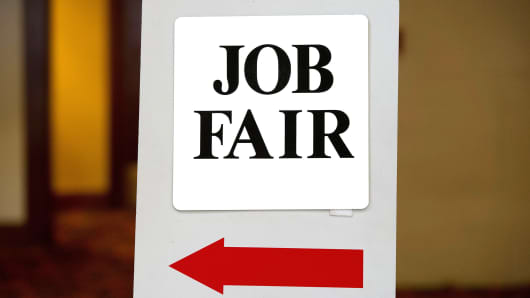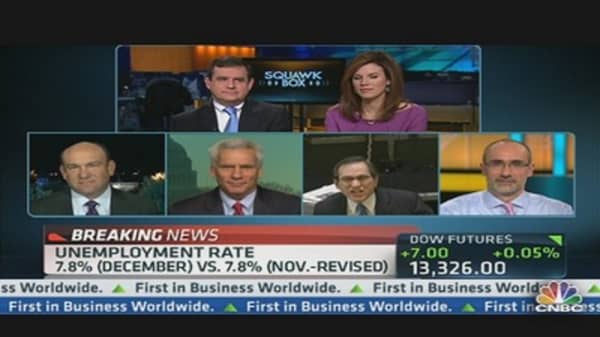The U.S. employment picture continued its gradual improvement in December, adding 155,000 positions as the jobless rate held at 7.8 percent.
Economists had been expecting a slightly better result, but most of the major industries showed little change from their previous levels, according to the latest report from the Bureau of Labor Statistics.
The numbers were almost exactly in line with the overall jobs picture for 2012, during which there were an average of 153,000 net new positions per month.
That's right around where economists figure job growth has to be just to maintain the unemployment rate, which came down during the year from January's 8.3 percent largely because more people gave up looking for work.
"I don't think this is a big needle mover one way or the other," said Liz Ann Sonders, chief investment strategist at Charles Schwab. "Businesses are not having a problem from the employment perspective; they are from a confidence and (capital expenditure) perspective."
As has been the case since the financial crisis in 2008, the jobs report gets viewed through the prism of how it will affect monetary policy.
Investors got a bit of a jolt Thursday after the minutes from the most recent Federal Reserve meeting indicated to some that the central bank may cut off its stimulus policies sooner than expected. (Read More: End of Stimulus? Why It Isn't All Bad News)





